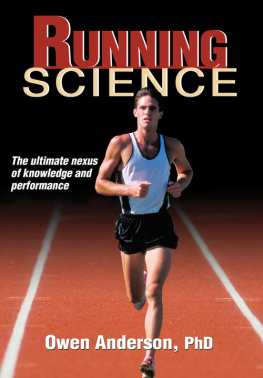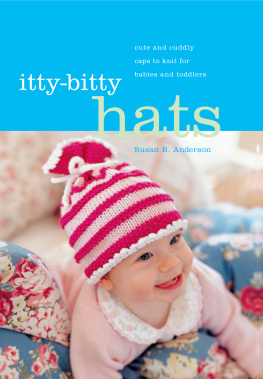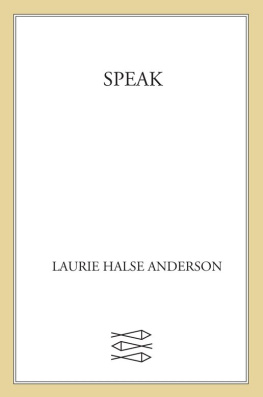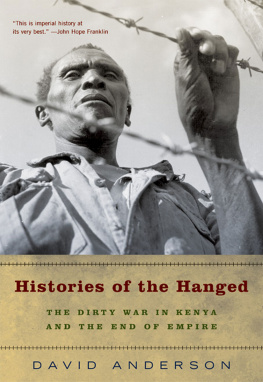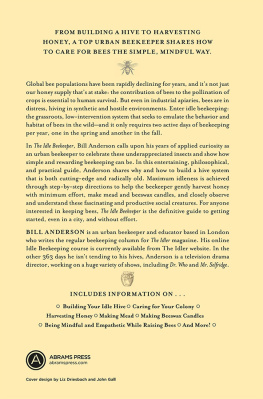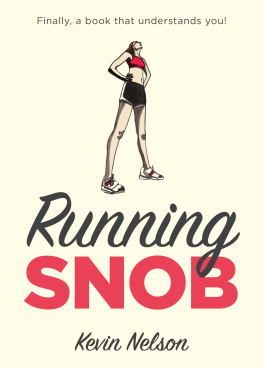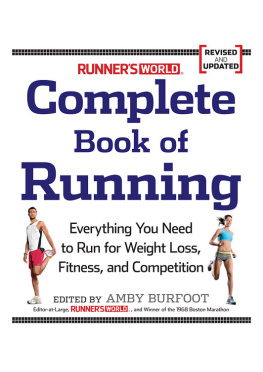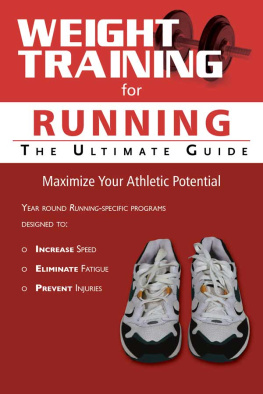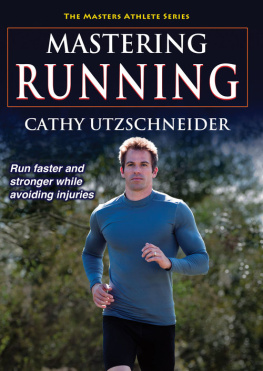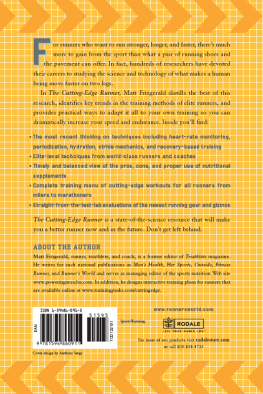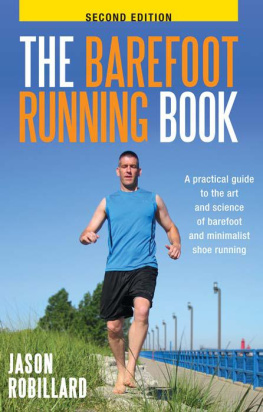Anderson - Running Science
Here you can read online Anderson - Running Science full text of the book (entire story) in english for free. Download pdf and epub, get meaning, cover and reviews about this ebook. City: Champaign, year: 2013, publisher: Human Kinetics, genre: Home and family. Description of the work, (preface) as well as reviews are available. Best literature library LitArk.com created for fans of good reading and offers a wide selection of genres:
Romance novel
Science fiction
Adventure
Detective
Science
History
Home and family
Prose
Art
Politics
Computer
Non-fiction
Religion
Business
Children
Humor
Choose a favorite category and find really read worthwhile books. Enjoy immersion in the world of imagination, feel the emotions of the characters or learn something new for yourself, make an fascinating discovery.
- Book:Running Science
- Author:
- Publisher:Human Kinetics
- Genre:
- Year:2013
- City:Champaign
- Rating:5 / 5
- Favourites:Add to favourites
- Your mark:
- 100
- 1
- 2
- 3
- 4
- 5
Running Science: summary, description and annotation
We offer to read an annotation, description, summary or preface (depends on what the author of the book "Running Science" wrote himself). If you haven't found the necessary information about the book — write in the comments, we will try to find it.
Running boasts millions of enthusiasts worldwide. For those serious runners, Owen Anderson offers the most comprehensive title revealing the hard science behind better performance. His book synthesizes the latest research on topics like physiology, biomechanics, medicine, genetics, biology,psychology, and training and offers prescriptive advice.
Running Science — read online for free the complete book (whole text) full work
Below is the text of the book, divided by pages. System saving the place of the last page read, allows you to conveniently read the book "Running Science" online for free, without having to search again every time where you left off. Put a bookmark, and you can go to the page where you finished reading at any time.
Font size:
Interval:
Bookmark:
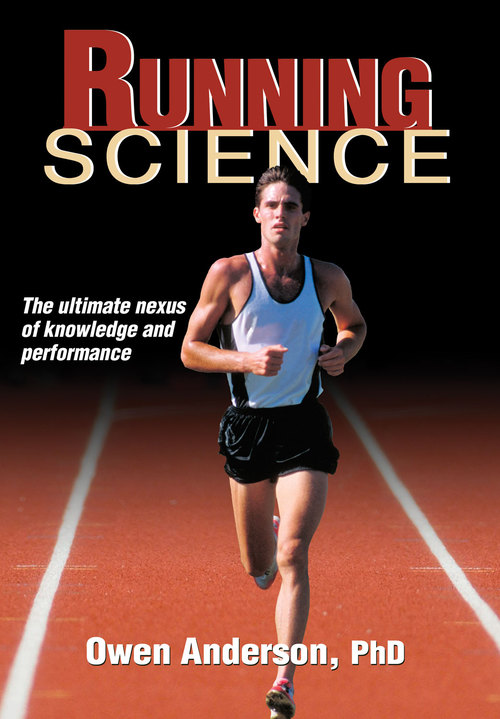
Owen Anderson, PhD

Human Kinetics
Library of Congress Cataloging-in-Publication Data
Anderson, Owen, 1947
Running science / Owen Anderson.
pages cm
Includes bibliographical references and index.
1. Running--Training. 2. Sports sciences. I. Title.
GV1061.5.A63 2013
796.42--dc23
2013004559
ISBN-10: 0-7360-7418-X (print)
ISBN-13: 978-0-7360-7418-6 (print)
Copyright 2013 by Owen Anderson
All rights reserved. Except for use in a review, the reproduction or utilization of this work in any form or by any electronic, mechanical, or other means, now known or hereafter invented, including xerography, photocopying, and recording, and in any information storage and retrieval system, is forbidden without the written permission of the publisher.
This publication is written and published to provide accurate and authoritative information relevant to the subject matter presented. It is published and sold with the understanding that the author and publisher are not engaged in rendering legal, medical, or other professional services by reason of their authorship or publication of this work. If medical or other expert assistance is required, the services of a competent professional person should be sought.
The web addresses cited in this text were current as of January 2013, unless otherwise noted.
Developmental Editors: Tom Hanlon and Heather Healy
Assistant Editors: Claire Marty and Sarah Wiseman
Copyeditor: Ann Prisland
Indexer: Nan N. Badgett
Permissions Manager: Martha Gullo
Graphic Designer: Joe Buck
Graphic Artist: Julie Denzer
Cover Designer: Keith Blomberg
Photograph (cover): Human Kinetics
Photographs (interior): Human Kinetics unless otherwise noted
Photo Asset Manager: Laura Fitch
Visual Production Assistant: Joyce Brumfield
Photo Production Manager: Jason Allen
Art Manager: Kelly Hendren
Associate Art Manager: Alan L. Wilborn
Illustrations: Human Kinetics unless otherwise noted
Printer: McNaughton & Gunn
We thank Michigan State University in East Lansing, Michigan, and Walt Reynolds of The Trainers Studio in Lansing, Michigan, for assistance in providing the location for the photo shoot for this book.
Human Kinetics books are available at special discounts for bulk purchase. Special editions or book excerpts can also be created to specification. For details, contact the Special Sales Manager at Human Kinetics.
Printed in the United States of America
10 9 8 7 6 5 4 3 2 1
The paper in this book is certified under a sustainable forestry program.
Human Kinetics
Website: www.HumanKinetics.com
United States: Human Kinetics
P.O. Box 5076
Champaign, IL 61825-5076
800-747-4457
e-mail: humank@hkusa.com
Canada: Human Kinetics
475 Devonshire Road Unit 100
Windsor, ON N8Y 2L5
800-465-7301 (in Canada only)
e-mail: info@hkcanada.com
Europe: Human Kinetics
107 Bradford Road
Stanningley
Leeds LS28 6AT, United Kingdom
+44 (0) 113 255 5665
e-mail: hk@hkeurope.com
Australia: Human Kinetics
57A Price Avenue
Lower Mitcham, South Australia 5062
08 8372 0999
e-mail: info@hkaustralia.com
New Zealand: Human Kinetics
P.O. Box 80
Torrens Park, South Australia 5062
0800 222 062
e-mail: info@hknewzealand.com
E4428
To Liz, for your constant, unfailing caring and support and for keeping me moving forward even in the most-troubled times with no thought for yourself
To Chemtai, for teaching me so much about Kenyan running and never giving up
To my parents, for mentoring me to do rather than watch
To Cori, for being such a cool, tough, and loving daughter
To Uncle Bud, for life-long friendship
To all the kids in the Tana River Delta, for inspiring and trusting me and for holding on to hope and working for a better future
To Eunice and Namwezi, for your integrity and for showing me how to help the Delta kids
To Lyn, for your great friendship, always welcoming chair, and incomparable roast-beef sandwiches
To Le, for introducing me to real friendship and a positive approach to life
And to pastors Jim and Matt, for your faith, guidance, and encouragement
I would like to thank my Human Kinetics editors, Claire Marty, Tom Hanlon, Heather Healy, and Sarah Wiseman, for expertly guiding this book to completion.
I would also like to thank Walt Reynolds for our always productive and stimulating discussions of innovative training techniques and for helping me to understand so many valuable concepts and practices concerning running form and running specific strengthening.
I would like to thank Chemtai Rionotukei, Walter Reynolds, and Julia Williams for their patient, wonderful, and skilled work during the photo shoot for this book. Chemtai, Walter, and Julie spent countless hours ensuring that each exercise, drill, and running segment was photographed optimally. I would also like to express my gratitude to Neil Bernstein for his professional and outstanding work taking the photos.
The science of running is undergoing a revolution that has entered its fifth decade. In the 1970s, exercise physiologists were sure that endurance running was about oxygen, with oxygen limitation the cause of fatigue during exercise and  O2max the physiological variable to be examined.
O2max the physiological variable to be examined.
From a scientific perspective, endurance runners were little more than hearts and leg muscles. The heart was the pump that sent oxygen to the lower appendages, and specialized structures in those muscle fibers called mitochondria used the oxygen to provide the energy necessary for running. Once the limit in that system was reached, anaerobic energy took over, lactic acid built up in the muscles, and the hapless runner was done for the day. A competitor with a better oxygen-delivery and supply system won the race.
In that model, which had its origins in the 1920s at the Harvard Fatigue Laboratory in Cambridge, Massachusetts, the work of Nobel Prizewinning physiologist A.V. Hill seemed to show that lactic acid could decrease muscular force production, and the brain and spinal cord were just along for the ride, responding meekly to the requests of the heart and leg muscles. If the leg muscles had a steady bath of oxygen, the nervous system sent enough impulses to keep them moving at the requisite rate.
All of this seemed fine until some probing running researchers began to reveal in the 1970s and 1980s that there were other physiological variables that predicted running success. Notably, running economy (i.e., a measure of how stingy runners were with their oxygen) and lactate-threshold velocity (i.e., the velocity above which lactate began to build up in the blood; originally called anaerobic threshold speed) were shown to be relatively reliable predictors of endurance performance.
 O2max and the Role of the Nervous System
O2max and the Role of the Nervous SystemMaking matters much worse for the traditional model, studies began to appear that revealed that 
Font size:
Interval:
Bookmark:
Similar books «Running Science»
Look at similar books to Running Science. We have selected literature similar in name and meaning in the hope of providing readers with more options to find new, interesting, not yet read works.
Discussion, reviews of the book Running Science and just readers' own opinions. Leave your comments, write what you think about the work, its meaning or the main characters. Specify what exactly you liked and what you didn't like, and why you think so.

